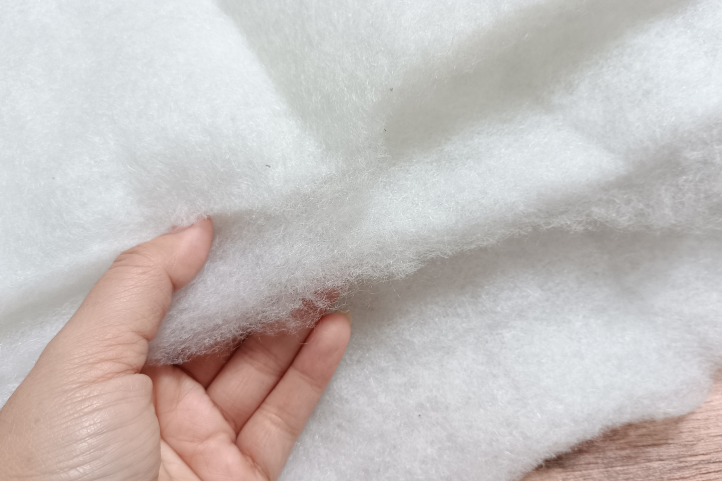
If you’re a beginner quilter completing your first quilt sandwich, you may be asking yourself, “what is quilt batting?” An essential part of the quilt sandwich (comprised of your quilt top, batting and backing), quilt batting is a layer of insulation between your quilt top and the back of your quilt. Quilt batting acts to provide not only a layer of warmth to quilts, but also adds stability and structure to your final design.
As quilting beginners, when you begin to buy your materials for your quilting projects, you’ll encounter a handful of different types of batting to choose from. Feeling overwhelmed? Don’t be. We’ve got your back! Our helpful guide to the different types of quilt batting is a fantastic reference to keep on hand before your next trip to the fabric store. In our Quilting 101 article, we’ll discuss the options available to quilters, as well as what type of batting pairs best with different types of projects and patterns. Take the stress out of sewing with our quick quilt batting guide.
Cotton Batting
Found in both 100% cotton and cotton/polyester blends, this type of quilt batting is widely available to quilters and provides warmth and a lovely, lived-in look to quilts after washing. According to Accuquilt’s article, “Quilting for Beginners: Choosing the Right Batting,” cotton batting has some shrinkage, which is what leads to the crinkly finished look. They note that while cotton batting is “fine for experienced hand quilters,” it can “be dense for beginners”.
Cotton batting often comes in both white and a more natural coloring, which is important to keep in mind when you’re selecting batting. Batting made with 100% cotton has a natural breathability that other battings lack, while a cotton/poly blend has limited breathability given its composition.
Polyester Batting
Made from manmade fibers, polyester batting is widely available to quilters and while not breathable, its light weight lends it to being a popular choice. Polyester batting is typically affordable and produces a fluffier look to quilts. If you don’t like the crinkled look that cotton batting can produce after washing, then polyester is a good option.
It’s important to note that polyester batting does not provide much warmth, so if your quilts will be used as bedding, this may not the best option. Accuquilt notes that polyester batting is “suitable for hand and machine quilting of all levels.”
Bamboo Batting
Newer to the quilting world is bamboo batting, which though more expensive than other batting options, is well-liked for its drape capabilities and sustainability. Lee A. Heinrich notes in their article, “All about quilt batting: 6 types of batting and when to use them,” that bamboo batting “is a greener alternative to cotton, since bamboo is more quickly renewable than cotton.” Heinrich notes that it is often difficult to tell cotton and bamboo batting apart, making it an eco-friendlier alternative to traditional cotton.
Due to its natural fibers, bamboo has good breathability and cooling and insulating properties. Bamboo batting also has less shrinkage than cotton, so while it is a more expensive option, it is certainly worth checking out.
Wool Batting
Made from all-natural wool, wool batting is known for its warmth and drape. Lighter weight than cotton, wool batting provides less shrinkage than cotton, although it does tend to be more expensive. Wool batting can be found in both 100% wool and wool blends.
Heinrich states that wool batting has a “bit higher loft than cotton, so it’s a good alternative to polyester if you’re looking for a high-loft, natural-fiber batting.” Wool batting is recommended for hand quilting, and should not be placed in a dryer, as the heat can cause damage.
Fusible Batting
An interesting option, fusible batting is batting that features a layer of fusible glue on both sides, allowing it to be ironed. Fusible batting is a great way to save time during the quilting process, as it does not need to be prewashed before using. With this convenience comes some potential pitfalls, and it should be noted that this type of batting is recommended for smaller quilting projects such as bags and mini quilts and is not recommended for larger patterns. Relatedly, this type of batting may not be available in larger sizes and can be made with different fibers, so it’s important to check the manufacturer’s description when purchasing this type of batting.
While the types of batting listed above are the most common that you’ll see at your local fabric store, quilt batting is available in even more options, such as flannel or silk, as well as different fiber blends. It’s vital to research the batting options available to you at your local fabric store or your favorite online retailer before purchasing, so that you can find the best batting match for your next quilt pattern.
What type of quilt batting do you prefer? Where do you find the best deals on quilt batting? Share your favorite batting tips below in the comments with your fellow readers! Plus, don’t forget to save this article to your favorites so that you’ll always have it handy.
